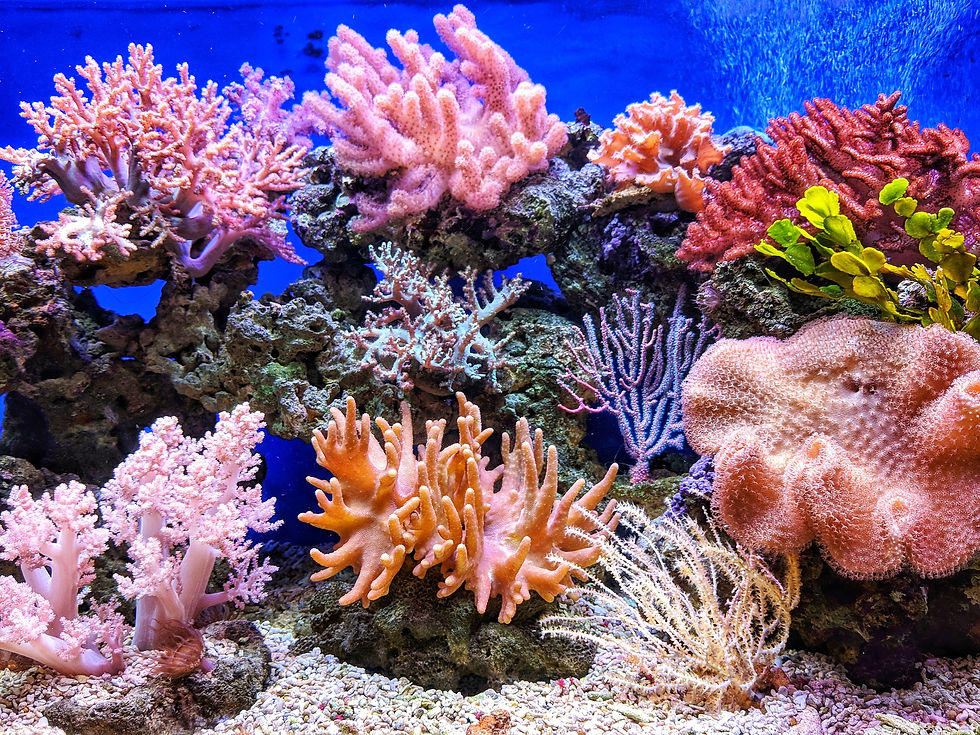Three Negative Effects of Fast Fashion
- Hannah Rose

- Jun 19, 2021
- 3 min read
Updated: Aug 16, 2021
Fashion has always been a means for people to express themselves. To create and follow popular trends. A mark of popularity and an output for people’s creativity. New technology has produced new ways of shopping which introduces; fast fashion. Manufacturing focused on producing mass quantities of trendy clothes, cheaply made.
It has made it easier for people to purchase off the runway dupes for next to nothing prices. With this rising in popularity, what are the negative effects on our ocean and planet?
Cheap but not cheerful
Everyone loves a bargain and I am guilty of doing a haul on Shein. Shocked at how low the prices are – dresses for £5 and bags for £3. I always thought there must be a catch, and there is – the effect it has on the planet.
With these clothes being priced so low, the materials used are being cheaply sourced. Polyester contains a mass amount of micro plastics, which end up in our oceans. In the ocean, because the micro plastics are so small we are unable to extract it. Plastics are digested by smaller marine life causing health issues.
With these cheap clothes not lasting long, it encourages people to buy more for the same low prices. This overconsumption leads to textiles being imported and old clothes end up on landfills. This idea of cheap is better does not apply. These fast fashion brands have a direct negative impact on the environment.
Let’s keep it local
Although there comes great excitement awaiting an online package, less thought is put into how it gets here. From a garment to go from a concept to a final product it often goes through five stages; design, material production, garment production, distribution and consumer.
With fast fashion cutting corners, the whole production process is significantly more dangerous towards the environment. In the material stage, they use harmful chemicals such as pesticides to speed up the process. Wasting over 2,700 litres of water dyeing fabric in toxic dyes, which eventually end up in our oceans.
What’s the alternative? It’s local manufacturing.
Often viewed as a pricier method of production. It helps our eco system by seeking local materials, keeping the emission of CO2 gases lower by less travelling.
“Manufacturing is important to our local community because it maintains a high quality local skill base, local and regional suppliers of materials and services and promotes training opportunities.” Tod Zonderman
It puts a focus back on community and helping to support small businesses adds a personal touch to your purchase. Websites like Etsy allow you to discover local businesses online throughout the UK. Gifts can be personalised and come with the added satisfaction of helping to grow a resident creator.
The time for change
Often when purchasing new clothes, we don’t really think about how many hours of labour went into creating it. Those hours are often long and met with unethical working conditions.
One recent case is online company Boohoo who faced major backlash for their dehumanising working conditions in factories in England. In summer 2020, it was reported by LBL that workers were being exploited by being paid £3.50 an hour and put at high risk of catching COVID-19 as no safety measurements were put in place.
It’s not just Boohoo who are guilty of this. Other online retailers have exploited workers, especially if they are outsourcing materials from different countries. By companies setting up camp in areas it does provide jobs for locals. Yet it isn’t a job with healthy benefits. It destroys the cost of local materials as people are having to pay more for less due to overproduction.
With workers not being paid a fair wage, unable to compete they often end up in a state of poverty. Meanwhile the company is making a massive profit by paying workers little for cheap labour.
How to help
With these facts – how do we as the consumer make positive changes and minimise any further damage to the planet?
Research! Researching the brands that you are going to purchase from to see if they are producing sustainable clothing.
This can be hard to do ourselves if we don’t know where to start, that’s why the app Good on You helps. It has a directory of brands and goes into detail of their positives and negatives. Therefore it rates how ethical the company is.
This is important as not everyone can afford to shop 100% ethically as the prices generally increase. If peoples’ budget is high street fashion, it helps ease the guilt by seeing what the brand is working towards.
The main contributors are the shareholders behind the companies. Most consumers are striving towards positive change.
However companies need to be listening and adapting in order to help save the planet.



Comments